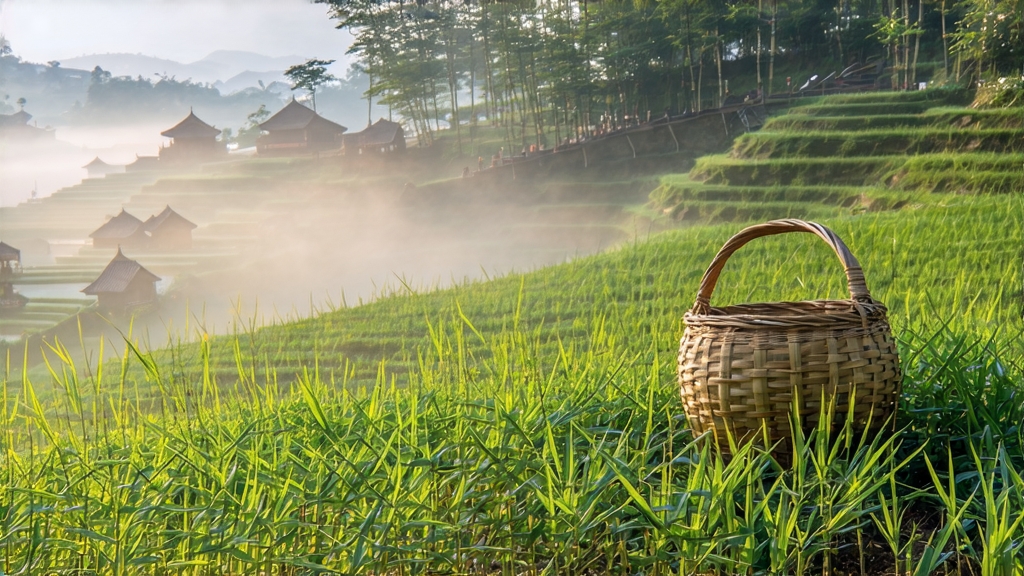
Tucked above the Sichuan basin, where the Min River carves clouds into the flanks of sacred Mengding Mountain, a tea once reserved for emperors still unfolds its buttery fragrance each April. Mengding Huangya—literally “Yellow Bud from Mengding”—is the least-traveled path of China’s six major tea families, a yellow tea so scarce that even seasoned Chinese connoisseurs speak of it as a legend rather than a beverage. Yet its story, technique and cup character offer a living window into the vanished world of Tang-dynasty court taste, when color, aroma and ritual were inseparable from statecraft.
History: from altar to throne
Buddhist monk Wu Lizhen is credited with planting the first seven tea bushes on Mengding’s summit in 53 BCE, an act later chronicled as the birth of cultivated tea. By the Tang dynasty (618-907) those bushes, ring-fenced by stone and visited by pious officials, yielded “Immortal Tea” offered at the imperial altar. When the court moved its capital to nearby Chengdu during the An Lushan rebellion, palace tasters noticed that buds left overnight in damp bamboo turned a lustrous yellow and brewed into a liquor softer than green yet livelier than black. An edict of 806 CE formally designated Mengding Huangya as tribute, demanding 360 leaves—no more, no less—picked before Qingming festival and carried by relay horse to Chang’an within seven days. The tea disappeared from court records after the Song, surviving only in monastery cellars and local mountain songs until 1959, when a Sichuan agricultural team rediscovered three ancient mother trees and re-established micro-gardens at 1,400 m.
Micro-terroir: where cloud becomes leaf
Mengding’s climate is a collision of Tibetan plateau chill and Sichuan basin humidity. Night temperatures drop to 8 °C even in late April, forcing the tea bush to convert starch into soluble sugars and amino acids. The result is a bud-tip that is almost 7 % L-theanine, double the level of neighboring green teas, and a unique terpene profile dominated by linalool and geraniol—compounds normally found in oolong. Soils are yellow-brown laterite rich in kaolin, draining quickly so that roots stress-produce malic acid, the same nuance that gives fine champagne its grip. Four heritage cultivars—Mengding #9, #16, the ancient “Sweet Water” landrace, and a rare albino mutant called Jade Heart—are inter-planted to create a natural blend that balances floral top notes with a creamy mid-palate.
Plucking: the mathematics of rarity
Authentic Mengding Huangya is made only from the unopened bud and its half-open neighbor, a standard known as “one flag, one spear.” Pickers climb 300 m of stone steps before dawn so that leaves are still turgid with overnight dew. Each kilo of finished tea requires 42,000 such sets, translating to roughly six hours of focused plucking per 20 g of retail product. To protect the downy tips, harvesters wear cotton gloves and carry wicker baskets lined with fresh banana leaves; metal is never allowed to touch the leaf.
Craft: the sealed yellowing ritual
Yellow tea’s defining step is “sealed yellowing” (men huang), a slow oxidation that occurs not through rolling but via controlled respiration. Mengding masters divide the process into five micro-stages:
- Kill-green at 160 °C for 90 seconds in a pine-fired wok, just enough to denature polyphenol oxidase while preserving a 5 % residual moisture.
- Wrap 250 g of hot leaves in double-layered cotton cloth, forming a tight bun the size of a rice bowl; the core temperature remains at 38 °C for four hours, triggering non-enzymatic browning that turns chlorophyll into pheophytin and releases a popcorn-like aroma.
- Unwrap and hand-toss the leaves in a bamboo drum under 80 % relative humidity; this re-distributes moisture so that the bud tip regains suppleness while the stem stays crisp.
- Repeat the wrap-toss cycle three times over 72 hours, reducing leaf moisture by only 2 % per cycle—slow enough to let starch hydrolyze into maltose, the source of Huangya’s signature honey note.
- Finally, low-temperature bake at 55 °C for six hours using dried